Ramlösa brunnspark in Helsingborg has a history dating back to the 17th century, when the first health-giving spring was discovered here. Ramlösa brunn served as a health resort for a long time, and the water for Ramlösa mineral water is still drawn here today.
Innehållsförteckning
Ramlösa Brunnspark
Ramlösa Brunnspark (pronounced: Frameless brunnspark) is a beautiful park where you can both see beautiful historic wooden villas and experience wonderful nature. There is also plenty of exciting history here. We made a visit last summer, when we travelled around Skåne with the motorhome, but have not had time to tell you about the visit until now.

Ramlösa brunnspark is located in Ramlösa about five kilometres south of central Helsingborg.
Ramlösa brunn - from health resort to mineral water
It was at the end of the 17th century that the provincial doctor Johan Jacob Döbelius discovered that water from the iron spring in Ramlösa had health benefits for Charles XII's soldiers.. The properties of the water were impressive and on 17 June 1707 Ramlösa Brunnspark was inaugurated.

Over time, it became very popular to make a pilgrimage to Ramlösa and the water was prescribed for all sorts of ailments. The water from the spring was believed to cure everything from rheumatism and insomnia to skin diseases and paralysis.
At the end of the 19th century another spring was found, an alkaline spring with water rich in minerals and salts. The addition of carbon dioxide created Ramlösa mineral water, which we still drink today.

Brunnshotellet
Ramlösa Brunnshotell, or "Stora Hotellet" as it is also known, is perhaps the most prominent building in the park. The yellow building, which is entirely made of wood, is painted yellow and decorated with beautiful white details.
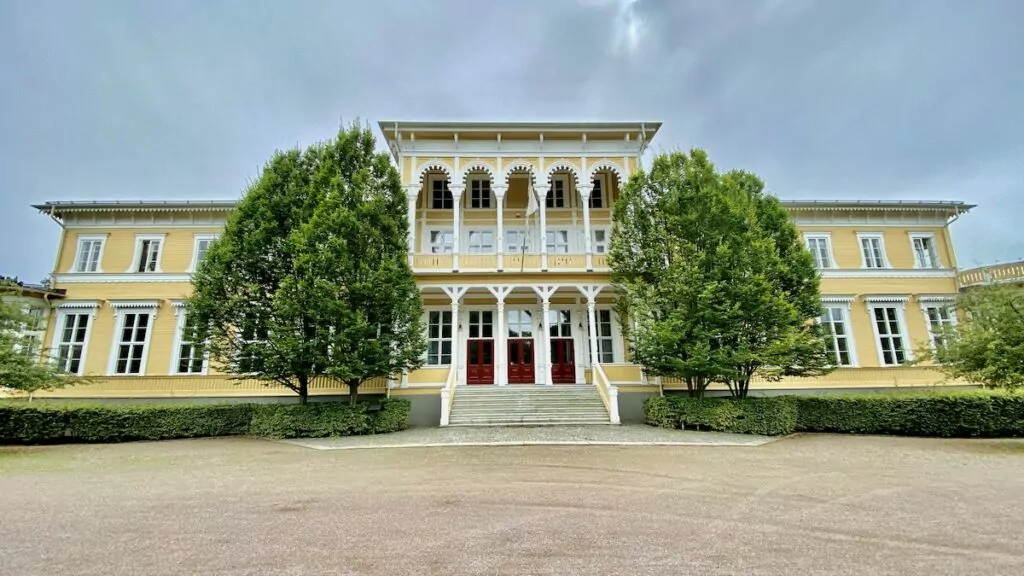
The building was completed in 1880 and became a listed building in 1973. The interior of the former hotel was renovated in 2005-2006 and now serves as offices.
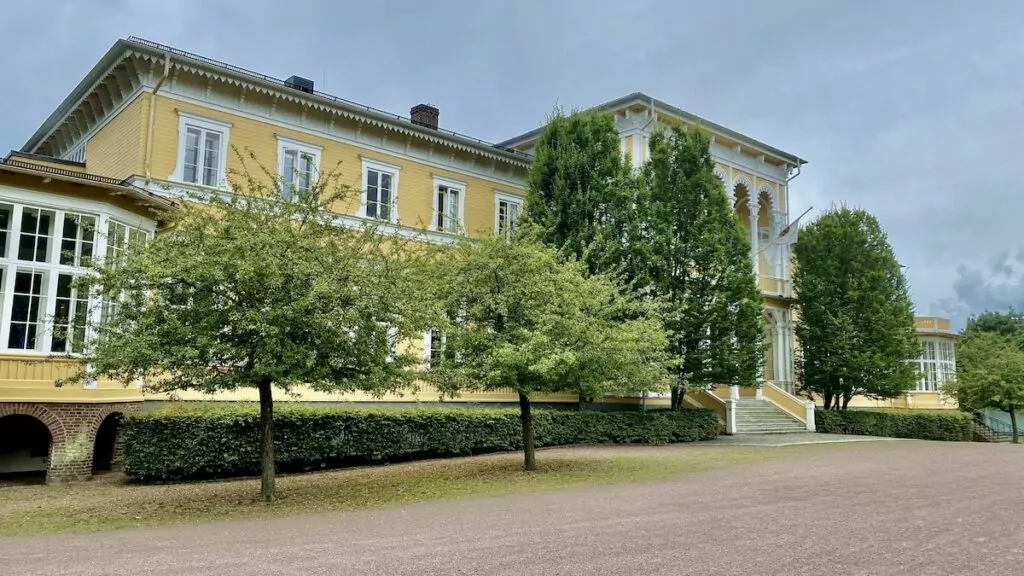
Bathhouse in Ramlösa brunnspark
Another building that is also beautifully yellow is the former hot bath house. In the past, bathing was an important part of the Wells Park's health activities and in addition to hot baths, electric light baths and mud massage baths were offered. Today, this house, like many other buildings in the park, serves as a residential building.

Villas in Ramlösa brunnspark
If you like beautiful historic wooden villas, you can really get your fill in Ramlösa Brunnspark. In and around the park there are, in addition to Brunnshotellet and Varmbadhuset, also a large number of other fine 19th century houses, which today serve as residential buildings or offices.
Medical centre was built in 1800 and is one of the oldest buildings in the park. Many prominent professors at Lund's Faculty of Medicine have lived here when they served as well doctors.

Villa Desideria is another historic villa in the park. This half-timbered house was built in 1801 by the Trolle family. The building was named after Karl XIV Johan's wife, Queen Desideria, who lived here when she visited the fountain of health.

Villa Linnea was designed by architect Alfred Hellerström and built in 1896. The facade is made of imitation timber and brick. We were particularly fascinated by the beautiful vegetation that surrounded the entire building.

Villa Veronika was designed, like Villa Linnea, by Alfred Hellerström and built in 1896.

Pelar House
Built in 1919-1921 to the designs of architect Ola Andersson, the Pillar House is designed with a tower in the centre and two arcades of pillars. The building was renovated in 2015 and hosts, in summer, the photography exhibition "The history of Brunnspark".

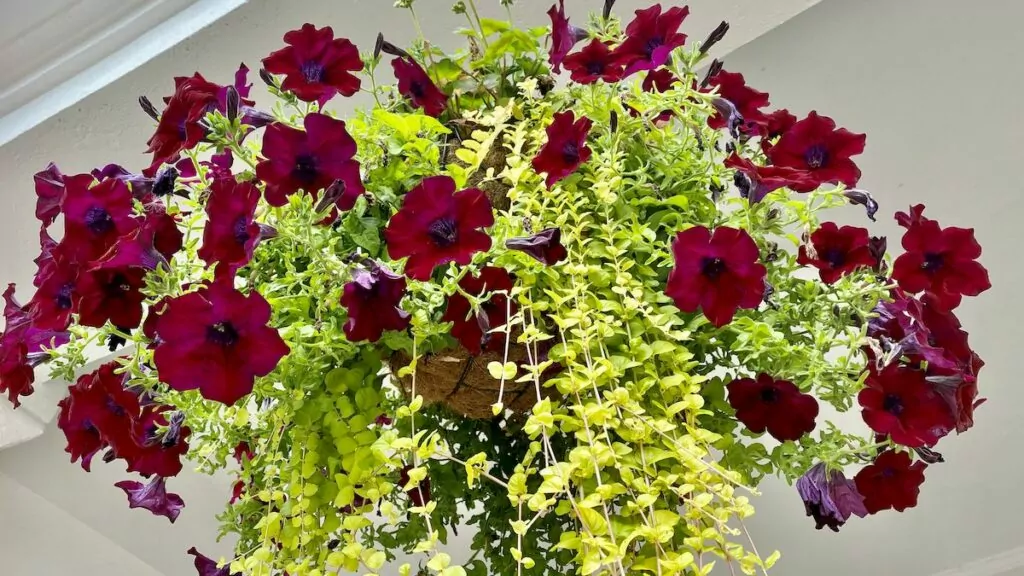
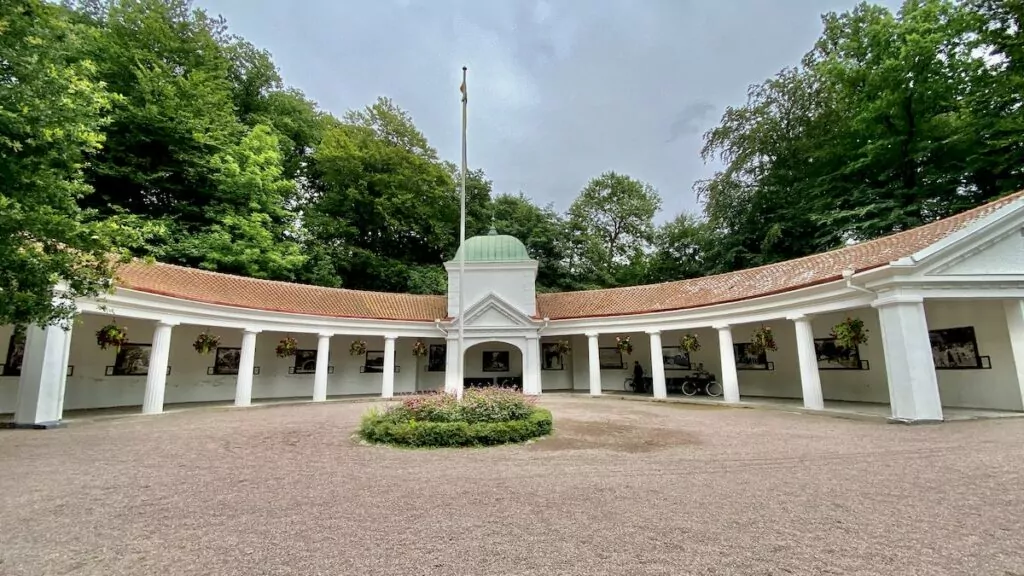
Springs in Ramlösa Wells Park
As you stroll through the park, you can see its heart, the springs. It was at the end of the 17th century that the physician Johan Jacob Döbelius discovered that water from the Iron source in Ramlösa contributed to better health among Charles XII's soldiers.

The alkaline source was only discovered in 1895, by accident. The spring is 90 metres underground and it takes around 70 years (!) for a raindrop to travel all the way down. The water was once considered healing and used to treat all sorts of ailments.
They also started carbonising the water and selling it in bottles. The water is still used today and is piped via a stainless steel pipe from the source to the factory on the Attekulla industrial estate.

Forest park
In one part of Ramlösa Brunnspark you will find the slightly more wild forest park. Here you can walk in beautiful nature, surrounded by beech, oak, ash and elm.

There is a walkway in the park called the 'Philosophical Walk'. This is where the well-wishers once strolled and you might even find their names carved into the tree trunks.

The nature here is very beautiful and peaceful, so in a way it feels like the park could have some health benefits, even if we no longer believe that water can cure diseases.



Ramlösa mineral water today
The Ramlösa brand (pronounced Frameless) belongs to Carlsberg Sverige AB, part of the Danish brewery group Carlsberg. The water in the Ramlösa well is still used today, although it is no longer attributed any healing properties.
It pumps about 90 million litres (!) of water a year. It sells natural mineral water, which according to the Food Act is well water where nothing has been removed or added except carbon dioxide. It also sells flavoured water, where natural aromas have been added.

Where can you park your campervan?
There is a car park right next to Brunnsparken where you can park during your visit, but if you have a very large motorhome, it may be difficult to find a space. For the night, there are parking spaces at Råå harbour, for example. There is also a parking space at Parapeten in the centre of Helsingborg.
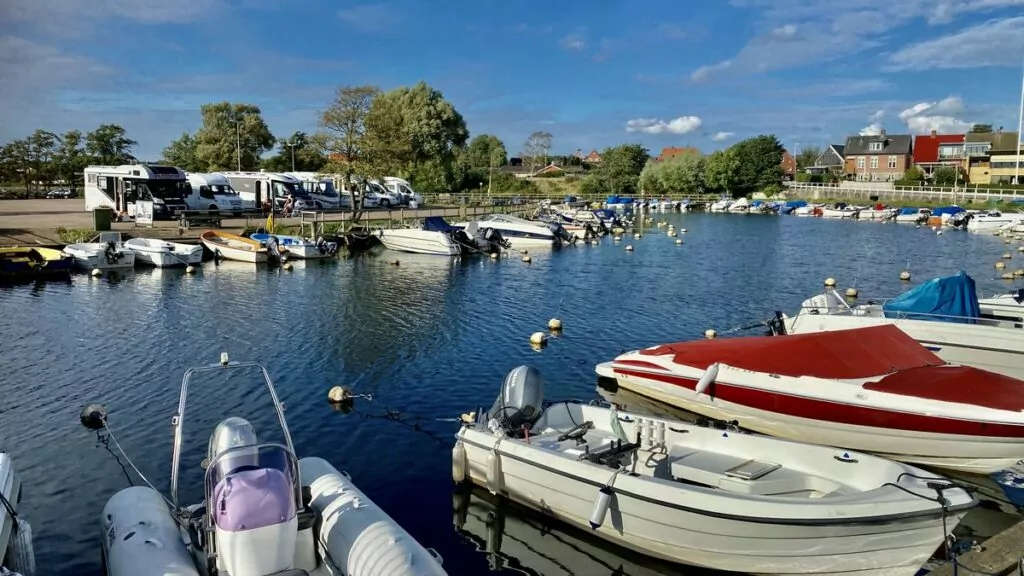
More to see and do in the neighbourhood
In addition to a car park on the Råå is a nice place to visit with a charming harbour and a beautiful nature reserve nearby. In the centre Helsingborg with 20 attractions you can see Kärnan and visit the cold baths. It is also nice to discover Fredriksdal Museums and Gardens, The Tropicarium in Helsingborg and Sofiero castle and castle garden.


A day at Bongska Huset and its big sister Hotel Mossbylund
Guest writer: Pernilla Ekholm Bongska Huset i Abbekås is beautifully located in Abbekås harbour in Skåne, close to...
Everyday luxury at Hotel Dannegården in Trelleborg.
Guest writers: Magdalena and Pernilla Travelling and long-distance adventures are great. Everyday luxury in your neighbourhood should...
Stationen Ystad - cosy bed & breakfast in Skåne
Stationen Ystad is a really cosy Bed & Breakfast in Skåne. Peter and his brother...
The Swedish Skåne Road - FREEDOMtravel Themed Road
The Swedish Skåne Road is a themed road that takes you through Skåne, to experience the...
Things to do in Malmö - 28 sights and experiences
What to do in Malmö? This Scanian city has a lot to offer, in...
Street art in Malmö - a guide to Malmö's street art
Street Art in Malmö! It can be called street art, street art, wall paintings, murals or simply...
Disgusting Food Museum in Malmö - a "disgusting" visit
The Disgusting Food Museum in Malmö is for those who want to shudder and think "What...
With a camper in Malmö - tips on pitches and experiences
By motorhome in Malmö! We paid a visit to Sweden's third largest city with...
Things to do in Helsingborg - 20 sights and experiences
What can you see and do in Helsingborg? Helsingborg is a lovely Scanian city with...
Fredriksdal in Helsingborg - museums and gardens
Fredriksdal in Helsingborg, or Fredriksdal Museum and Gardens, is a nice open-air museum in Skåne. Here you can...
Things to do in Ängelholm - our 9 best tips
What to see and do in Ängelholm? Ängelholm is a charming little town in Skåne...
Northeast Skåne - 6 excursions by car from Kristianstad
Northeast Skåne offers beautiful nature, charming towns and several exciting destinations. We present a...
Excursions on the Bjäre Peninsula - 8 wonderful experiences
Excursions on the Bjäre Peninsula will be about today. At the risk of repeating ourselves a little ...
Kullahalvön and Kullaberg nature reserve
Kullahalvön, or Kullen as the peninsula is also called, is located in north-west Skåne. Here you will find ...
Swedish vineyards - 4 farms with Swedish wine
Do Swedish vineyards exist? Yes, they do, and Swedish wine is on the rise...
Krapperup Castle in Skåne - with castle park and coffee house
Krapperup Castle is a Scanian estate dating back to the 14th century. Today there is a beautiful castle...
Birgit Nilsson Museum - starry-eyed in the Scanian soil
Birgit Nilsson Museum tells the story of the farmer's daughter who became a world star. Sometimes reality surpasses poetry, and...
Norrviken's gardens - fantastic park outside Båstad
Norrviken Gardens, located outside Båstad in Skåne, was built at the end of the 19th century by gardening enthusiasts....
Båstad with a motorhome - are you welcome?
Båstad with a motorhome - are you welcome? Yes, you could ask yourself that. The feeling in...
Artwork Nimis - directions and interesting facts
Nimis is a fascinating artwork on the Kulla peninsula in Skåne, created by artist Lars Vilks. It...
Höganäs in Skåne - the ceramics town on the west coast
Höganäs is located in north-west Skåne, on the Kullen peninsula, and is probably for most...
Tropicarium in Helsingborg - exotic animals from around the world
Tropikariet in Helsingborg, Sweden, is an exotic indoor park that showcases fascinating animals from...
Sofiero castle and gardens - royal floral splendour!
Sofiero Castle and Castle Garden in Helsingborg offers a fantastic environment with intense greenery, splendour and...
Råå - picturesque in the south of Helsingborg
Råå is a charming old fishing village in southern Helsingborg. Today this is a picturesque coastal community...
Things to do in Landskrona - 12 sights and experiences
What to see and do in Landskrona? Landskrona is a pleasant town on the Öresund...
What to do on Ven in Skåne - 10 tips for a scenic island
What to see and do on Ven? This scenic island is located off the west coast of Skåne,...
Jakriborg in Skåne - inspired by the Middle Ages
Jakriborg is a residential area on the Scanian plain, just south of Lund, which looks like...
What to do in Ystad - 12 tips for experiences and attractions
What to do in Ystad? We have visited Ystad several times, but never so...
What to do in Lund - 16 tips for sights and experiences
What to do in Lund? This Scanian university town is characterised by students, research and youthful...
Dalby South Forest - Europe's smallest national park
Dalby Söderskog National Park is Europe's smallest national park. The nature area is located outside Lund in Skåne and is...
Culture in Lund - an open-air museum in the city centre
Kulturen i Lund is an open-air museum that extends over two blocks, right in the centre of...
Sandhammaren in Österlen - a beautiful sandy beach
Sandhammaren in Österlen is a beautiful sandy beach with soft, fine-grained sand, which has been...
What to do in Trelleborg - our 9 best tips
What to do in Trelleborg? Sweden's southernmost city has become known as the 'Palm City',...
Glimmingehus - Scandinavia's best preserved medieval castle
Glimmingehus in Skåne is the best preserved medieval castle in the Nordic region. Construction of the castle began in the late 15th century,...
Ales stones - an ancient mystery in Skåne
Ales stenar is Sweden's largest and best preserved shipbuilding site. The stone formation sits magnificently on a hill...
Smygehuk in Skåne - Sweden's southernmost headland
Smygehuk in Skåne is Sweden's southernmost cape. There is a small harbour, some cosy little...
Skanör - sandy beach, finger food and a blog session
Skanör is located at the bottom of southeastern Skåne and offers fantastic sandy beaches and cosy restaurants....
FRS Baltic - from Trelleborg to Sassnitz in less than 2.5 hours
FRS Baltic takes you from Trelleborg to Sassnitz in less than 2.5 hours, with its high-speed...
Kronovalls castle - a beautiful wine castle in Skåne
Kronovall Castle is a stunningly beautiful baroque castle in Österlen, Skåne. Today the castle serves as...
Kristianstad - 17 things to do and experience
Kristianstad, and the area around Kristianstad, offers everything from castles and charming farms to lovely...
Cosy accommodation in Skåne - close to nature at Cocoon meetings
In May this year we stayed one night in a fantastic cosy accommodation in Skåne....
Ivön and Bäckaskog Castle in Skåne - the hunt for the horse grave
Ivön and Bäckaskog Castle in Skåne are located just north-east of Kristianstad. We were here one...
Åhus in Skåne - a holiday resort with vodka and ice cream
Åhus in Skåne is a lovely holiday resort, which is known for its Absolut...
Absolute Home - a visit to The Åhus villa
We visited Absolut Home and The Åhus Villa in Åhus, Skåne. Here we have...
Yangtorp - qigong temple in Skåne given new life
Yangtorp is something as unusual as a giant qigong temple in Skåne. In the centre of Skåne...
Pia's Kitchen in Kristianstad - one of Sweden's smallest restaurants?
Pia's Kitchen in Kristianstad must be one of the smallest restaurants in Sweden. The small restaurant is located...
Have you visited Ramlösa Brunnspark? Did you know that the carbonated water Ramlösa comes from here?
Facts about Ramlösa Brunnspark
- Landscape: Skåne
- County: Skåne County:
- Municipality: Helsingborg
- Address: 256 54 Ramlösa
- Read more: You can find more information on Helsingborg's city website.
Activities in the park
- Exercise loop: 1.8 kilometres of lighting.
- Activities for children: A playground is located in the south-western part of the park.
- Events: In summer, the photo exhibitions "The history of Brunnsparken" are organised in the Pelarhuset and "Moments from the past" in the ticket booth at the western entrance.
Services and practical information
- Prices: Visiting the park is free of charge.
- Food service: There is no restaurant or café in the park. You are allowed to bring your own picnic.
- Shop: There is no shop in the park.
- Parking: Free parking is available. If you have a large motorhome, the car park may be crowded.
- Toilets: In summer there is a toilet behind the Pelar House down in the ravine.
Find your way to Ramlösa Brunnspark
- Car: From Helsingborg, drive south on the E4 motorway. Turn off on Lagmansgatan towards Ramlösa brunnspark.
- Municipal: You can get to Ramlösa Brunnspark by train or bus from the centre of Helsingborg.
History at Ramlösa Brunnspark
- End of the 17th century: Johan Jacob Döbelius discovered that water from the iron spring in Ramlösa had health benefits for Charles XII's soldiers.
18th century
- 1707: Döbelius inaugurated Ramlösa Brunnspark on 17 June this year.
- 1749: The health fountain was visited by Carl Linnaeus and the architect and court administrator Carl Hårleman. The latter erected a rune stone to commemorate his visit.
- 1760: Eberhard Rosenblad took over as superintendent of the well, and the number of visitors increased dramatically.
1800s - 1850s
- 1801: The resort was expanded, including a new inn. A bathhouse was built on the beach, where guests were taken by horse-drawn carriage.
- 1807: Court Marshal Achates von Platen, who leased Ramlösa Brunn, had the Grand Hotel built. Plantations were laid out and the park was frequently visited by royalty.
- 1824: The well was sold to Carl von Dannfelt, who built a new hospital and remodelled the park in the English Romantic style. Entertainment at the fountain was lively, with balls and concerts.
- 1828: Queen Desideria visited the park and stayed in the house now known as 'Villa Desideria'.
- 1840: Dr af Rosenschöld and Mr Dannfelt died within a year, and a period of many changes of ownership followed.
1850s to 1900s
- 1855: A company led by master horseman Rudolf Tornérhjelm took over the park. The park was renovated and a new bathhouse was built.
- 1876: With the help of financier Wilhelm Kempe, doctor Curt Wallis took over the well. The park was restored.
- 1877: Sweden's first horse railway was inaugurated, between Ramlösa Brunn and Ramlösa hafsbad.
- 1879: The old well hotel burned down, and a few years later a new one was built.
- 1882: The park changed hands again and became a park called 'Fjället', full of entertainment such as a funfair and dance floor.
- 1891: The horse tramway was replaced by the Decauville line and two steam locomotives purchased from the Paris World Fair.
- 1895: By chance, a spring of alkaline water was discovered. The water was rich in minerals, and by adding carbonic acid, Ramlösa mineral water was created. The park reverted to a classic fountain park.
20th century
- 1906: Ramlösa well water began to be sold outside the well park. At first, you had to go to the pharmacy to buy the water. An electrified railway opened on the same route as the Decauville line.
- 1910: Since this year, Ramlösa has been a supplier to the Royal Swedish Court.
- 1912: The first shop bottled water directly at the source.
- 1920s: Income from bottled water began to exceed income from well operations.
- 1943: Ramlösa Brunnspark was used as an assembly point for Danish Jewish refugees.
- 1945: The park served as a centre for receiving prisoners liberated from concentration camps, through the Red Cross rescue operation "The White Buses".
- 1956: Hungarian refugees from the Hungarian uprising were received in the park, which served as a transit camp.
- 1973: AB Ramlösa Brunnsanläggning, which took over the park a few years earlier, donated the park to the City of Helsingborg. The park was declared a listed building.
21st century
- 2001: AB Ramlösa Hälsobrunn ceased to be a separate company in 1999 and since 2001 the business has been part of Carlsberg Sverige AB, which in turn is owned by the Danish brewery group Carlsberg Breweries.
- 2010: The sculpture "Beyond the Waves", by Gustav and Ulla Kraitz, was inaugurated by Crown Princess Victoria and Crown Prince Haakon of Norway. The sculpture symbolises the reception of refugees in Skåne.













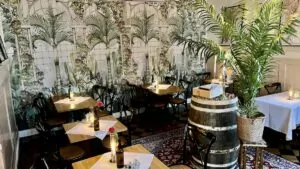



































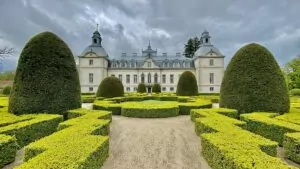










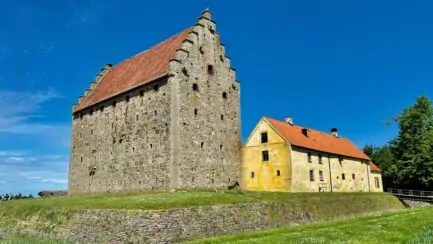

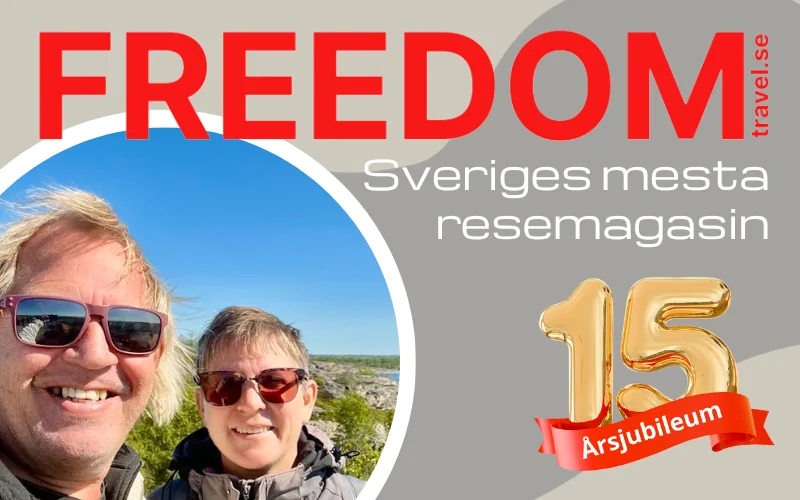


BP says:
I didn't know that Ramlösa is close to Helsingborg. Now I know it. Oh the houses are absolutely fantastic, especially Villa Linnea - quite un-Swedish I think, but oh so delicious:-)
30 January 2022 - 16:33
Helena says:
It is difficult to keep track of where everything is located. I often get control only when we have been on site 🙂 The villas are very nice and agree, especially Linnea!!!
31 January 2022 - 17:48
Lena+i+Wales+och+Spanien says:
Very interesting post, thank you!
I have never visited Ramlösa, but have passed the signs there many times.
As a tour guide, I used to talk about the place and in particular Johan Jacob Döbelius, whose portrait is in a small medallion on all Ramlösa bottles. Everyone has seen the picture, but very few have thought about it and knew who it was.
I want to go to Ramlösa.
Take care!
02 February 2022 - 9:45
Helena says:
Nice that you usually talk about this! I also usually feel that Ramlösa is quite unknown (except for the drink), at least here in Stockholm. Have a great time!
02 February 2022 - 17:38
Jenny - stolt Ramlösabo says:
What a nice article written about our beautiful Ramlösa Brunnspark! We who live here are so happy about our beautiful park and here we have taken many wonderful walks that are good for both body and soul.
However, I would like to correct/clarify one thing in the story.
It says::
"1801: The complex was expanded, including a new inn (doctor's house)".
It seems to imply that the doctor's villa became an inn but that was not the case as far as I know. There is an adjacent equally beautiful "Ramlösagul" building that housed the inn.
13 February 2022 - 0:49
Helena says:
Glad you like our article Jenny! A great park with an interesting history! And thank you for your comment! We really want to get the facts right, and are grateful when someone sees and points out errors that creep in. I have removed (the doctor's villa). So, thanks again!
13 February 2022 - 8:51
Lena - gott för själen says:
What a beautiful area with exciting history! Yes, I knew that the water was carbonated from there, but I have never been there.
Hug Lena
06 July 2022 - 6:45